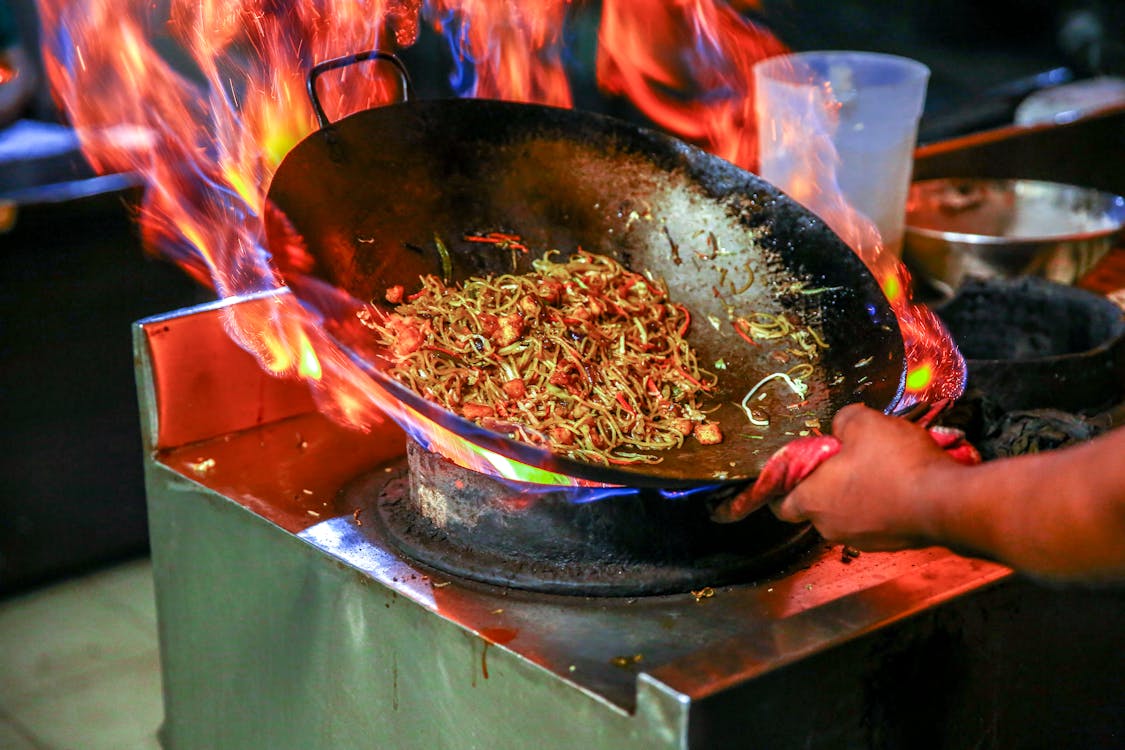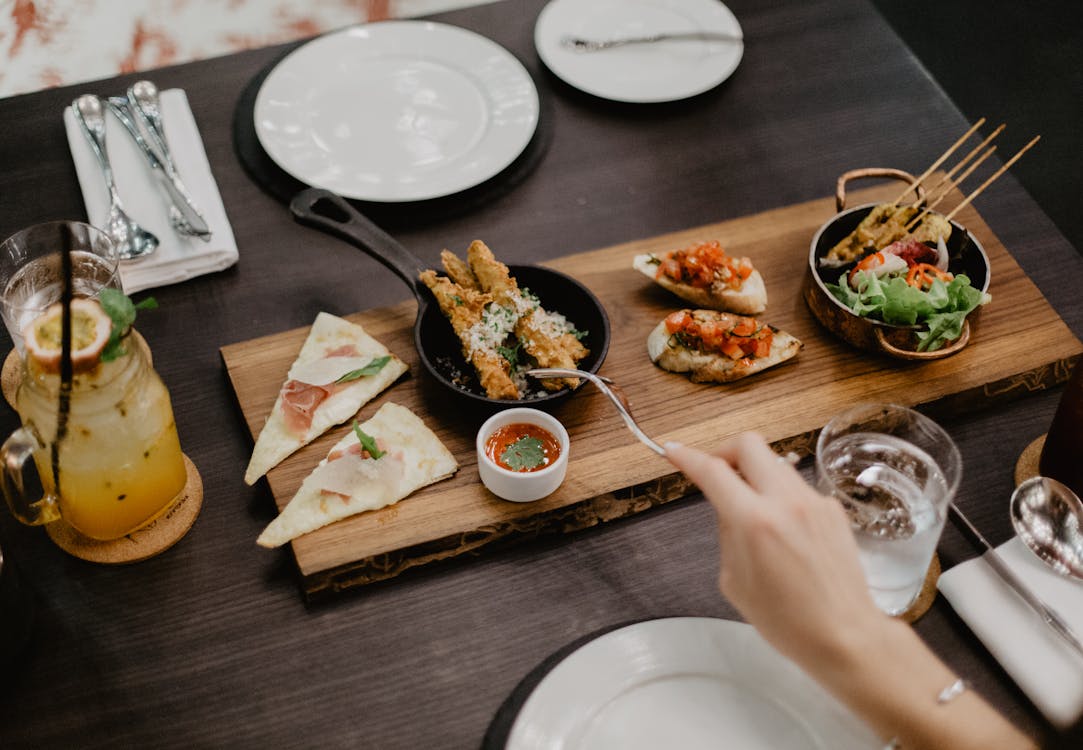China, also called the People’s Republic of China, is one of the largest and most populous countries in the entire world. The country has a fascinating history filled with dynasties and reformations. Apart from the monuments, the country is famous for its exceptionally unique food culture.
A number of Chinese immigrants have brought their recipes with them to the United States. Some of them have even changed dishes based on their experiences.
Origins
China has one of the world's most rich histories of cuisine. The foods that Chinese people have eaten for thousands of years have influenced the way we eat today.
Before Chinese people started cooking, they ate mainly raw food such as meat, fruits, vegetables and herbs. This was the beginning of what is known as the Paleolithic Period, and it lasted until about 5000 years ago.
From this time on, cooking became an art form in China. This was a significant step because it allowed people to use more flavorful ingredients than raw foods could offer.
Over time, Chinese cuisine became an important part of Chinese culture. It was influenced by the foods and cooking methods brought to China from other parts of the world, as well as Chinese traditions and ethnic inheritances.
The earliest records of Chinese cuisine date back to the 15th century BC, when the Shang dynasty was established. This era of Chinese cuisine is sometimes called the Golden Age, because it was the most prosperous period in the country's history.
During this time, rice was widely grown in central and eastern China. It was boiled to make meals and also made into wine. In northern China, wild sorghum and millet were farmed and used as substitutes for rice.
Later, wheat was introduced to China. It was a great source of carbohydrates for people who didn't have enough rice. In addition to rice, wheat was used in a variety of other ways.
For example, it was a common ingredient in pies. It was also a popular ingredient in ice cream-like deserts.
In addition, it was used as a seasoning in pickles and sauces. It was also known to help ward off scurvy in shipboard situations, as it contains vitamin C.
The foods and recipes that were brought to the United States by Chinese immigrants were a huge influence on the way we eat and cook. Many of these ingredients and recipes are still in use today.
The Chinese language and customs have an important place in American history as well. It is important to understand the history behind American Chinese cuisine and how it came to be so prominent in our culture.
Flavors
Its flavor profiles are unique, and the variety of recipes that have risen from it is almost limitless. From soups to meat, rice, vegetables, fruits, and more, Chinese food is diverse in both style and taste.
Some Chinese dishes have become very famous worldwide, such as chow mein and egg rolls. These are dishes that are commonly served in restaurants all over the world, and they have influenced other cuisines throughout the decades.
Other Chinese dishes, such as dim sum, are snacks that are traditionally a part of daily meals in China. These are often small bite-sized appetizers that can be sweet, salty, hot, or cold.
In modern times, some of these foods have branched out into restaurants all over the world, especially in America and Australia. This is because of the influx of immigrants from China who came to these countries in the early 19th century to work in the cookhouses that serviced the goldfields.
As the economy grew and more people became affluent, Chinese-American cuisine began to evolve into something that more closely resembled American fare. This shift was facilitated by the Hart-Celler Act, which allowed chain migration through family sponsorships and favored immigrants who were more educated and wealthier.
The new wave of immigrants also changed the menus of Chinese-American restaurants, focusing more on authentic recipes. This reflected the ethnic and multicultural nature of many Chinese Americans, who had to find ways to appeal to local tastes and cultural preferences as well as immigrant ones.
However, as the American food industry grew, many white-owned Chinese restaurants attempted to create authentic Asian dishes without understanding the culture. This is known as cultural appropriation and has led to heated debates in the past.
Fortunately, this situation has since been corrected. While some white-owned Chinese restaurants still have an uncomfortable history, many newer ones have a clean slate and strive to serve authentic Chinese food. Some even have chefs who are Chinese themselves, so they can better understand the roots of their foods and how to incorporate them into American menus.
10 Health Benefits of Eating Chinese Food
Preparation
Chinese cuisine is known for its unique flavors and spices. Common ingredients used include garlic, ginger, hot pepper flakes, and soy sauce. Other important seasonings include oyster sauce, sesame oil, and rice wine. These seasonings add a variety of different flavors to dishes, making them more enjoyable.
The Chinese believe that food should be prepared in a way that will balance the yin and yang of the body. For example, people from the northern part of China prefer to eat foods that are spicy and warm to increase blood circulation and remove coldness and dampness. However, people from the southern part of China tend to eat foods that are mild and cooling.
In addition to these differences, there are many other factors that affect the preparation of Chinese food. The climate of each area plays an important role in the cooking process.
For example, people in the north often use chilies and onions to season their dishes. These vegetables are believed to increase blood circulation and reduce the hotness and dryness of the climate.
Another factor that affects the preparation of Chinese cuisine is the availability of ingredients. It is important to have access to a variety of fresh, local foods to prepare delicious meals.
Chinese cuisine also has a unique style of presentation. It is considered important to arrange foods on the plate in a decorative manner and also to present them in a way that will appeal to the eye.
While the traditional methods of preparation have changed over the years, many people still follow traditional Chinese recipes. This helps to maintain the authenticity of the recipes and ensure that the dish tastes as it should.
The main components of a traditional Chinese dish are cooked rice, meat or tofu, and vegetables. These ingredients are then combined together with other ingredients to form a delicious meal.
One of the most popular types of Chinese food is fried rice. It is cooked in a skillet and served with vegetables, eggs, and other ingredients. This type of cuisine is very popular with both Chinese and non-Chinese people.
Dishes
A Chinese meal can be made of many different types of food, including fish, meat, vegetables, and grains. Each region of China has its own food traditions and culinary practices, influenced by both the climate and geography of the area. Northern China, for instance, tends to eat more hot and spicy foods, while Southern China is characterized by its more mild, more cooling diet.
Some common Chinese dishes include steamed rice, chicken, jian jiang (dumplings), beef, duck, fish, vegetables, and noodles. Dishes can be prepared with a variety of cooking methods, including boiling, steaming, roasting, and stir-frying.
Another dish that is often attributed to China is chop suey, an inexpensive, quick-cooking dish made from scraps of ingredients. It was an easy way for Chinese immigrants to make money and survive during the era of mass migration in the United States.
Chop suey is still served today in many American Chinese restaurants and is an important part of Chinese culinary culture. It is also a good example of the ways that Chinese cuisine has changed to suit American tastes.
Throughout its long history, Chinese cuisine has incorporated several new dishes. Some of these are inspired by foreign foods, such as lemon chicken and mango pancakes. Others, such as ham and chicken rolls, are more traditional in nature.
Some are purely Chinese in origin, such as Peking duck. The popularity of these dishes can be traced back to President Nixon's 1972 visit to China, which resulted in an increased interest in Chinese food among white Americans.
The Hart-Celler Act of 1965 encouraged chain migration, enabling Asians to enter the country through family sponsorship and to work in restaurants that specialized in Chinese cuisine. This new trend ushered in an era of authentic Chinese restaurants that reflected the diversity of Chinese immigrants and their varied origins.



